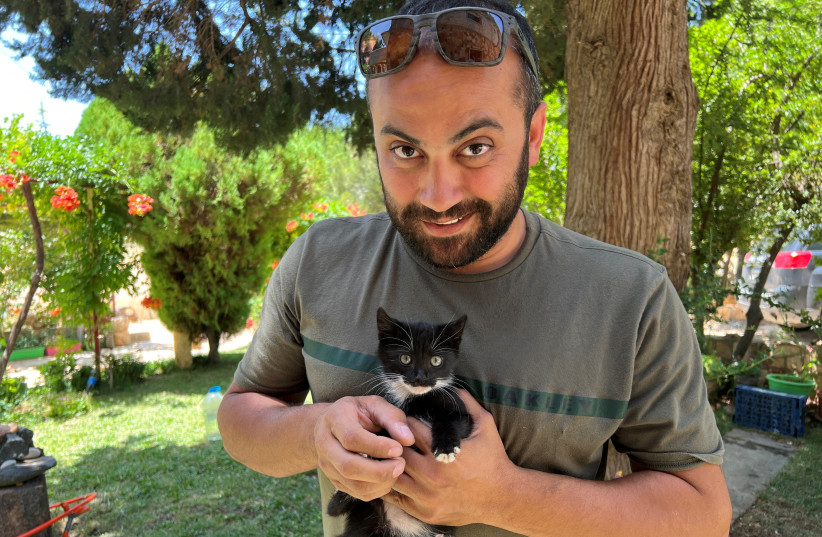Reuters rejects IDF defense of mistaken attack on journalists in Lebanon
Reuters yesterday released a detailed report slamming the IDF’s defense of its mistaken attack on a group of journalists in Lebanon on October 13, including a Reuters journalist, as invalid.
According to the report, an IDF tank crew killed a Reuters journalist and wounded six reporters by firing two shells in quick succession from Israel while the journalists were filming cross-border shelling.
The two strikes killed Reuters visuals journalist Issam Abdallah, 37, and severely wounded Agence France-Presse (AFP) photographer Christina Assi, 28, just over a kilometer from the Israeli border near the Lebanese village of Alma al-Chaab.
Reuters said it spoke to more than 30 government and security officials, military experts, forensic investigators, lawyers, medics, and witnesses to piece together a detailed account of the incident.
The news agency reviewed hours of video footage from eight media outlets in the area at the time and hundreds of photos.

As part of its investigation, Reuters also gathered and obtained evidence from the scene, including shrapnel on the ground and embedded in a Reuters car, three flak jackets, a camera tripod, and a large piece of metal.
The Netherlands Organization for Applied Scientific Research (TNO) examined the material for Reuters at its laboratories in The Hague.
TNO’s key findings were that the large piece of metal was the tail fin of a 120 mm tank round fired from 1.34 km away.
IDF affirms it does not target journalists
Lt.-Col. Richard Hecht, the IDF’s international spokesman, said: “We don’t target journalists.”
Although Reuters said that Hecht made no further comment, at the time of the incident, the IDF released a statement saying that “On Friday afternoon, the Hezbollah terrorist organization fired at a number of locations along the Blue Line, including the firing of an anti-tank missile that hit the Israel security fence, adjacent to the community of Hanita.
“Immediately following the anti-tank missile launch, IDF soldiers suspected a terrorist infiltration into Israeli territory, and in response, used tank and artillery fire to prevent the infiltration…Hours later, a report was received that…journalists were injured in the area. The incident is under review,” continued the IDF statement.
In addition, sources said that the day before the incident, the IDF had requested that UNIFIL verify there were no civilians in the combat zone.
In addition, IDF sources said that it had made clear that entering combat zones on either side of the border creates a real and immediate danger to civilian lives, in light of the combat in the area during that time period.
The Jerusalem Post understands that the IDF probe into the incident still has not reached the point at which it can release its findings and there was no hint that that would be soon.
Against the IDF explanation, Reuters noted that the group of seven reporters from AFP, Al Jazeera, and Reuters were all wearing blue flak jackets and helmets, most with “PRESS” written on them in white letters. There were also many other journalists in that area that day.
“The evidence we now have, and have published today, shows that an Israeli tank crew killed our colleague Issam Abdallah,” Reuters editor-in-chief Alessandra Galloni said.
“We call on Israel to explain how this could have happened and to hold to account those responsible for his death and the wounding of Christina Assi of the AFP, our colleagues Thaier Al-Sudani and Maher Nazeh, and the three other journalists,” she said.
AFP Global News director Phil Chetwynd said the incident was “inexplicable and unacceptable.”
The attack was the first of two deadly strikes in the space of six weeks on reporters in Lebanon covering clashes between the Israeli military and Iranian-backed Hezbollah terrorists along the border following the October 7 massacre in Israel by Hamas.
Two journalists from Lebanese broadcaster Al Mayadeen were killed by a strike on November 21 as they filmed near the border with Israel. Al Mayadeen blamed the IDF for their deaths. The Israeli military said in a statement it was a dangerous area to be in because of “active hostilities.”
“Why were we hit? Why didn’t they fire a warning shot? If you don’t want us to take pictures, fire a warning shot. Why suddenly hit us without a prior warning, and then try to finish us off with the second strike?” said Reuters journalist Al-Sudani, 47, a photographer from the October incident.
The armored brigades deployed in northern Israel by the IDF are equipped with Merkava battle tanks, which have 120 mm smoothbore guns, said Nick Reynolds of the Royal United Services Institute in London. Neither the Lebanese army nor Hezbollah use that size of munition.
The report said the attack came from a military outpost at Jordeikh within Israeli territory, with military experts saying tanks drive up ramps to fire and then retreat down slopes for cover.
According to the report, the reporters were given the green light by Reuters to go to the area outside Alma al-Chaab, because prior to October 13, the area had not seen any significant escalation and was not considered high-risk by Reuters.
“Issam was not in an active combat zone when he was struck…in an area far from active conflict,” Reuters said in a statement.
Reuters said that its team did not alert the Israeli military of its presence, nor had any of the parties requested such notification. However, the IDF said it had discouraged all reporters from operating in the general border areas where the journalists were operating.
AFP video journalist Dylan Collins, 35, said, “We weren’t hiding under the trees or anything. We were very clearly seven well-marked journalists, in press vests with helmets with a car that has ‘TV’ on it, standing in an open area in the face of an Israeli military site…They knew we were there for well over an hour.”





Comments are closed.